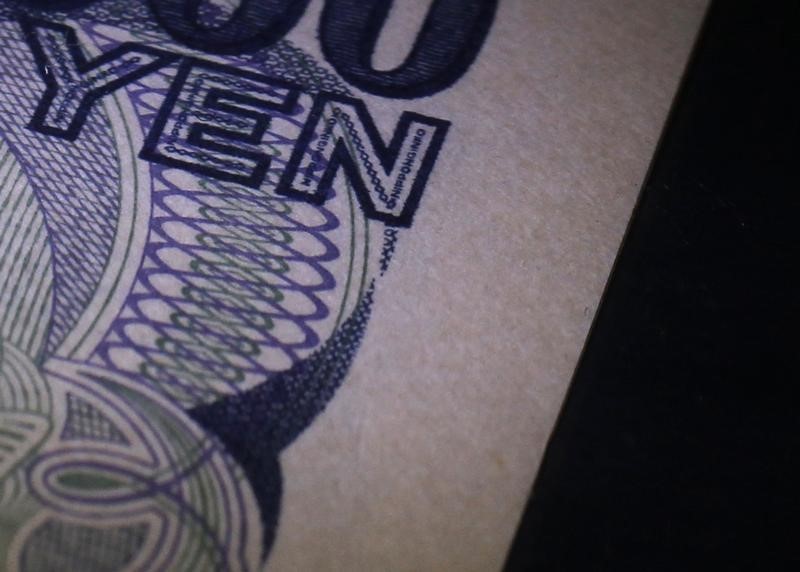* Japanese yen at 9-month low as new coronavirus cases
subside
* One-month euro/dollar implied vol at six-week high
* Graphic: World FX rates in 2019 http://tmsnrt.rs/2egbfVh
By Ritvik Carvalho
LONDON, Feb 19 (Reuters) - The Japanese yen was the biggest
mover in the G10 group of currencies on Wednesday, hitting a
9-month low as a slowdown in the number of new reported cases of
coronavirus and expectations for further policy stimulus boosted
risk sentiment in global markets.
China posted the lowest daily rise in new coronavirus cases
since Jan. 29, helping to lift the off-shore traded yuan to a
two-week high against the dollar.
Many view Chinese data on the virus with scepticism, but
sentiment was lifted by a Bloomberg report that Beijing was
considering cash injections or mergers to bail out airlines hit
by the virus.
Those steps would come after this week's cut in the
medium-term lending rate, which has fed expectations for a
reduction in the benchmark loan prime rate. "Generally a 'risk on' day after China announced it was
considering more stimulus measures to support the economy, such
as exempting small- and medium-sized enterprises from paying
pension contributions until June," said Marshall Gittler, head
of investment research at BS Swiss.
"Asian markets are up almost across the board. Hence
Australian dollar higher, Japanese yen and Swiss franc lower,"
he said.
The yen tends to benefit in times of crisis or heightened
market uncertainty. It initially gained as news of the outbreak
first hit global markets, but has now retraced that move as the
pace of the reported increases in virus cases slows.
For an interactive version of the above graphic, click here
https://tmsnrt.rs/3bQk7Lm.
The yen was half a percent lower versus the dollar by midday
in London at 110.42, having earlier hit 110.45, its lowest since
May 2019. JPY=
Elsewhere, the euro bounced briefly above $1.08 but sank
below the mark to trade flat as the dollar continued its rally.
The single currency had earlier fallen to a three-year low after
a survey showed weakening confidence in Germany. One-month
euro-dollar implied volatility EUR1MO= rose to its highest in
six weeks.
The euro has fallen 3.6% against the dollar this year, as
Europe's economic data has deteriorated while that of the United
States has mostly improved.
On Tuesday, Germany's ZEW research institute said in its
monthly survey that investors' mood had deteriorated far more
than expected in February, on worries coronavirus would curtail
world trade. The dollar index, which measures the U.S. currency against a
basket of its peers, was 0.12% higher at 99.558. .DXY
Investors are looking to the minutes from the Federal
Reserve's January meeting, due at 1900 GMT, for insight into the
Fed's thinking about virus risks.
The Australian dollar AUD=D4 , which rose during the Asian
trading session, gave up gains to trade flat at $0.6689. New
Zealand's dollar also gained 0.2%. AUD/
The antipodean currencies, heavily exposed to China, have
lost more than 4.5% against the dollar this year. Norway's
krone, sensitive to global growth via oil exports, has shed 6%,
and it slumped to an 18-year low overnight NOK= .
China's yuan CNY= touched a two-week low after the central
bank fixed a softer-than-expected trading band, and as investors
expected further monetary easing. "It's a tug of war between wait-and-worry and being relieved
that the infection rate is slowing down," said Bank of Singapore
currency strategist Moh Siong Sim. "The specific moves this
morning are related to more policy help from China ... there's
some relief that more help is on the way and that is restoring
some positivity to the market."
Yen hits 9-month low as virus case count slows png https://tmsnrt.rs/39KSAJ7
^^^^^^^^^^^^^^^^^^^^^^^^^^^^^^^^^^^^^^^^^^^^^^^^^^^^^^^^^^^>
